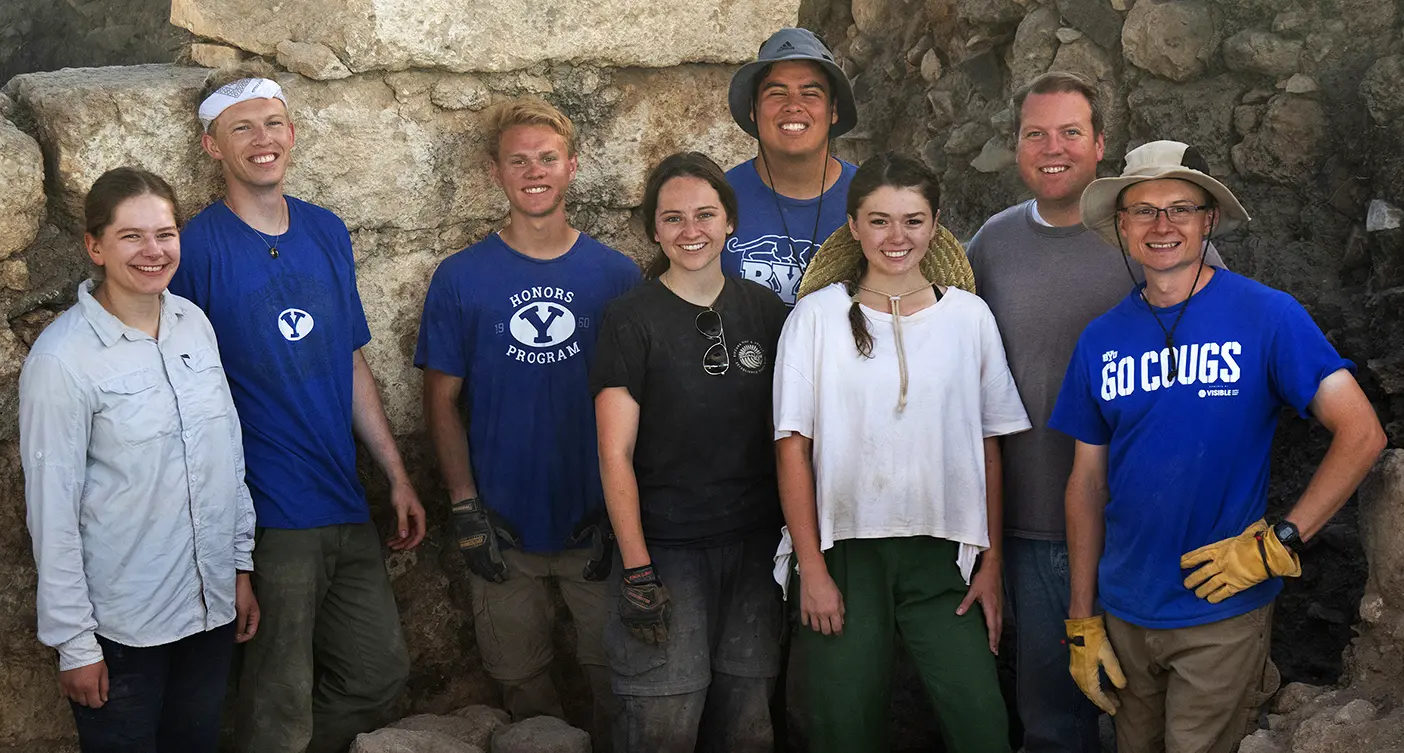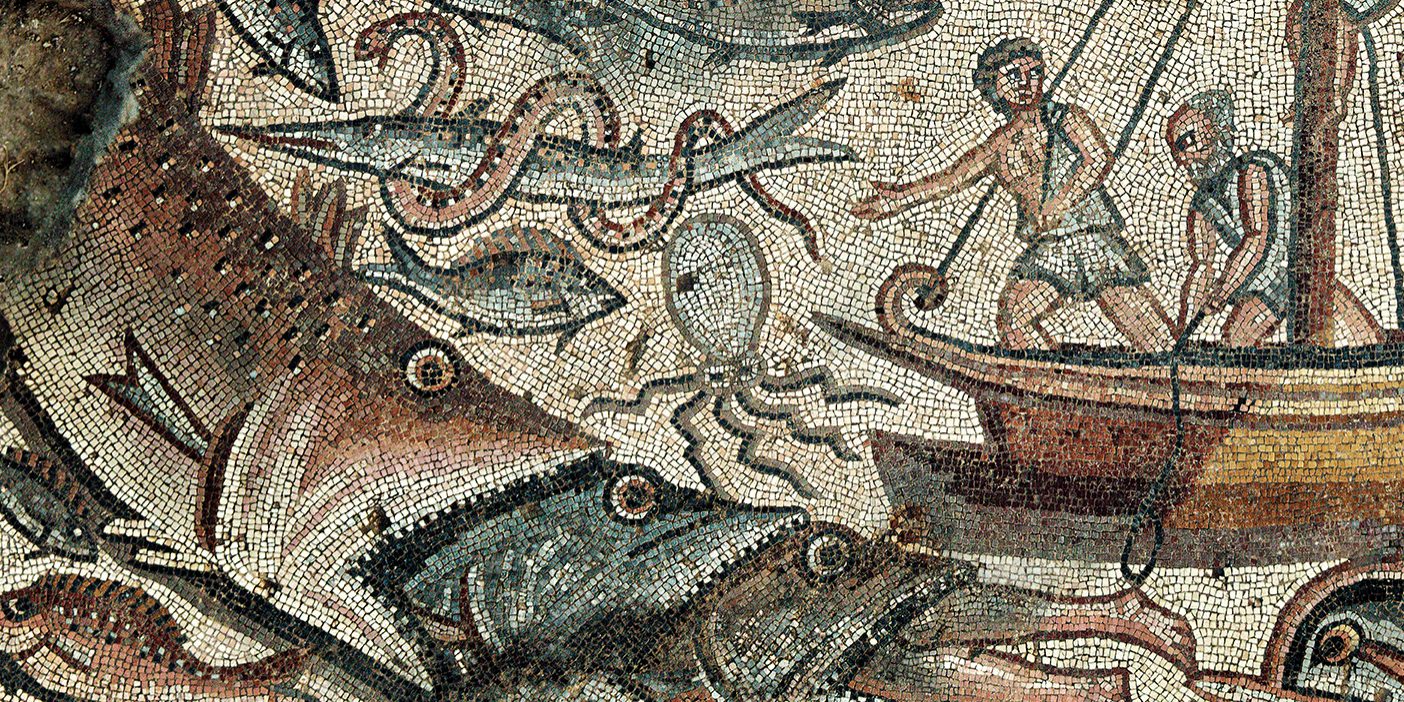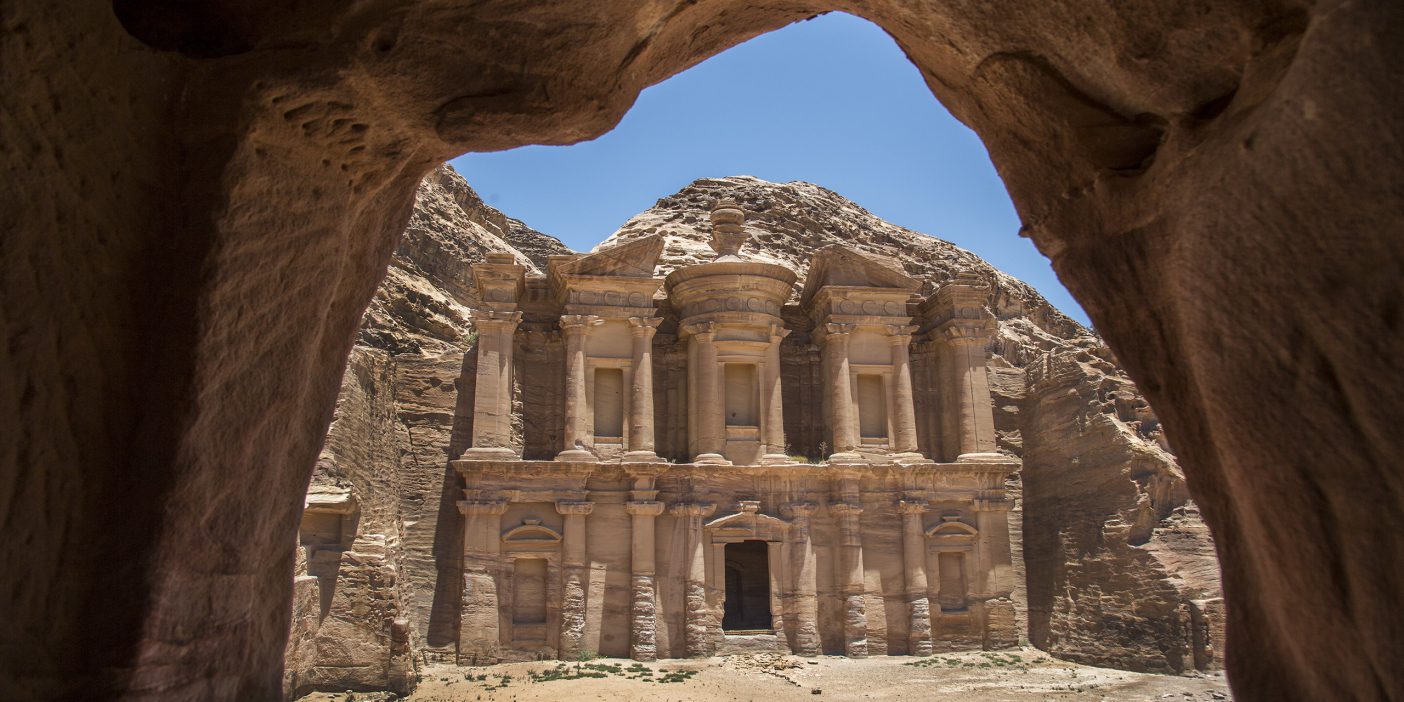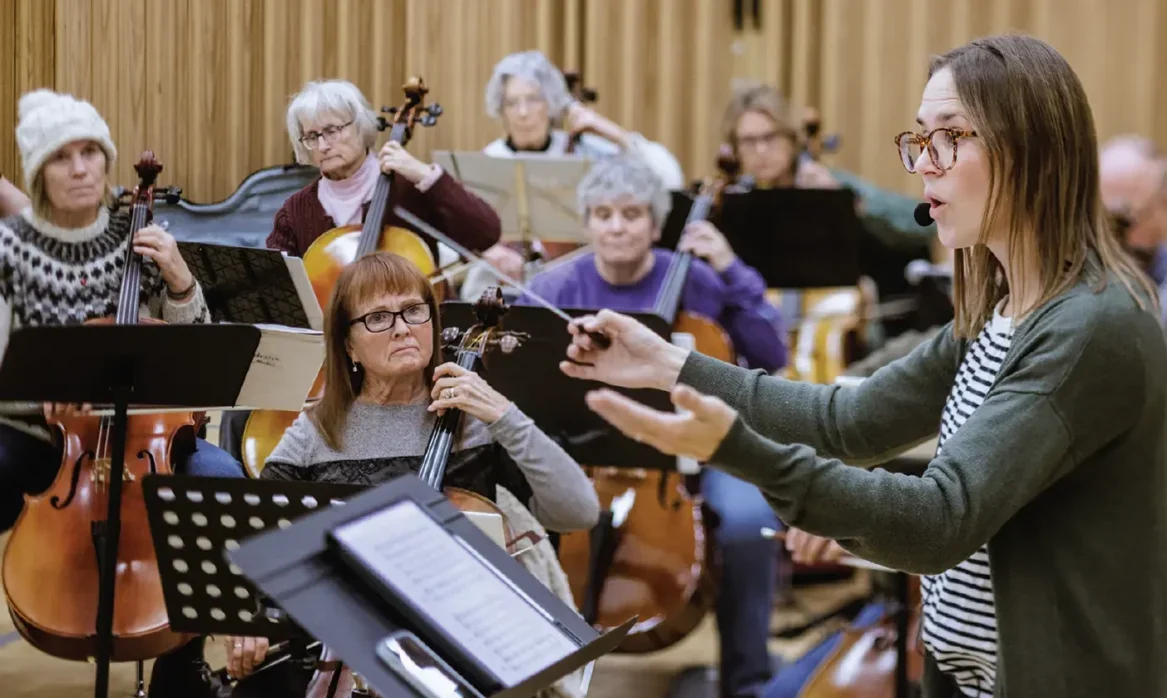
As dirt is brushed from the mosaic floor of an ancient Jewish synagogue, blank white eyes stare up from the ground at the huddle of researchers. The scene emerges: the Old Testament heroine Jael in the tent of the Canaanite general Sisera. In the Bible story, Sisera falls asleep, believing himself safe, and in his moment of weakness Jael takes a tent stake and stabs it through his temple.
At the excavation site in the village of Huqoq, on the northwest shore of the Sea of Galilee, BYU religion professor Matthew J. Grey (’03) and his students witness as the first known depictions from late antiquity of two Biblical heroines are uncovered.
“We got out the Book of Judges and started reading the account as we were uncovering the scene,” Grey remembers. “And then we kept going, and it turns out right next to it is another woman.” The prophetess Deborah, also from the Book of Judges, sits beneath a palm tree as the Israelite commander Barak seeks her out for prophetic guidance. These images are the first at Huqoq to center on the stories of women.
For 13 years students and faculty members from a variety of universities, led by the University of North Carolina at Chapel Hill, have revealed Bible story after Bible story depicted in colorful mosaic tiles, from the building of Noah’s ark to the drowning of the Pharaoh’s army in the Red Sea. For the BYU participants, Grey says, those years have seen countless devotionals, scripture and prayer nights, and plenty of time just talking together about the biblical world.
“It was an honor for BYU to be a part of this project,” Grey reflects. His testimony has been strengthened by “being able to connect with the faith of past communities. This is a community that existed 1,500 years ago, and we’re just now getting a sense of how they experienced God, how they experienced sacred space.”












